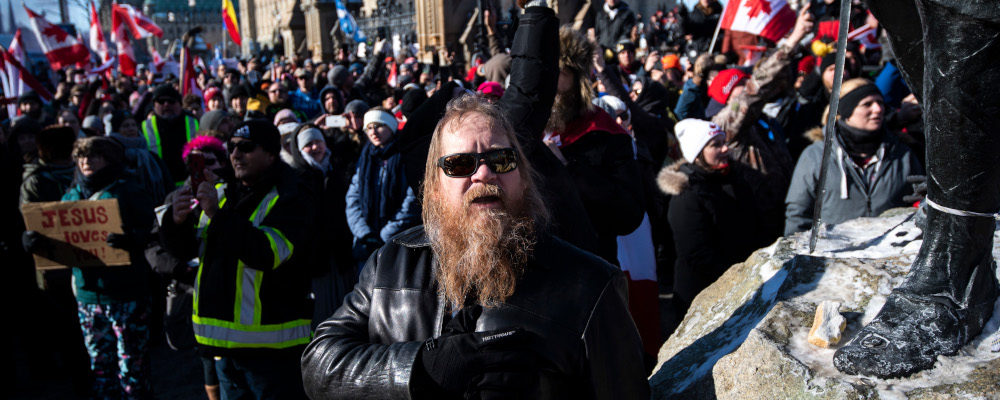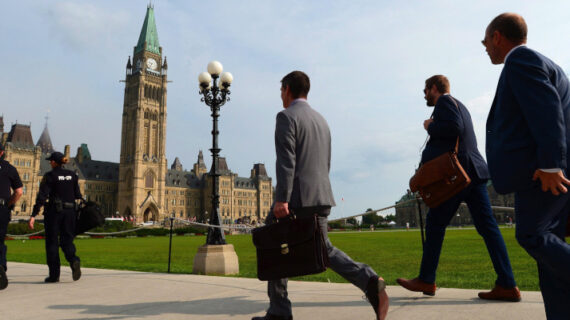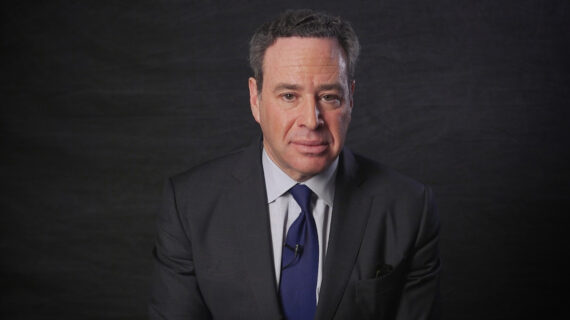I ordinarily suppose myself to be a clear-thinking rationalist. That is what my profession as a lawyer demands, and I strive to be a competent professional. It is far easier to have a clear-thinking, rationalist perspective from a comfortable chair behind a desk in a glass office tower.
However, it is challenging to maintain this perspective when it comes to one’s own life and requires a deliberate and focused effort. Within my profession, the saying goes, “The lawyer who represents themselves has a fool of a client.” It’s an admission that our rationality is easily defeated by emotions.
The human experience is, of course, marked with challenges: we do not consider ourselves defined by the mundane, but rather the character-defining moments brought about by some special event. The German jurist and political theorist Carl Schmitt once remarked, “The exception is more interesting than the normal case. The normal proves nothing, the exception proves everything; it not only confirms the rule—the rule only exists because of the exception. In the exception, the power of real life breaks through the crust of a mechanism grown sclerotic through repetition.”
Through this lens, the pandemic has forced us all individually into a state of exception. It impacts every part of our lives and forces us to behave in ways that we ordinarily would not. Of course, how we react is perhaps more revealing of our natures than what we would suppose. At the beginning of the pandemic, where the risk was unknown, most of us fell into a triage pattern: address the most urgent problems first and treat secondary issues afterward. As an analogy, a leaky roof is secondary to a house fire.
As we learned more about the pandemic and were given guidance and tools such that we can assess and manage our own risk, the shared perception of “COVID as housefire” waned. To some, perhaps the immunocompromised or parents with young children, it remains an existential threat. To others, it is akin to a leaky roof — a manageable but annoying problem. Figuring out how to come out of the pandemic is the policy challenge of our current moment. We eventually need to get to a point where we can lift all restrictions and avoid a situation where our health care capacity is overwhelmed, which should be a legitimate political question and one that is open to a reasonable debate.
In sum, that is how I believe how I should feel about the current pandemic restrictions from a calm and rational perspective taken at thirty-five thousand feet.
How I actually feel is much different.
Like many, COVID has dramatically impacted both my personal and professional life. I have had family members fall ill; it has contributed to several relationship problems; it has ruined what semblance of a social life I had pre-pandemic. It has made my life worse in almost every way imaginable. Accordingly, I am desperate for the pandemic to end and return to normal, and I want to do whatever it will take to end it.
This feeling of desperation causes stress, and everyone knows that individuals under stress are not always amenable to clear, logical modes of thinking. In one’s day-to-day life, I would suggest that humans do not think logically at all unless prompted to.
Instead of thinking logically, humans think heuristically and are constantly reoptimizing these heuristics as they proceed through their lives. Heuristic thinking essentially means to think practically through experience. They are mental shortcuts that allow us to make decisions faster. When humans are under stress, they are less likely to think logically and more likely to use heuristics where they would not ordinarily do so.
This might explain the reaction to the so-called “trucker protest” on Parliament Hill this past week.
Let us suppose that you are one of the approximately 90 percent of Canadian adults that have been vaccinated against COVID. Let us then suppose that your life has been inconvenienced in any number of ways since COVID. Let us further suppose that following the widespread availability of the vaccine, you quickly got double, and then triple, vaccinated as soon as you could.
Now let us suppose that you know that a group is holding out from getting vaccinated. You hear about all sorts of crazy conspiracy theories that these folks believe in. You hear your friends, neighbours, and colleagues talk about how these folks are clogging up the health care system. Maybe you have a family member who has had surgery or cancer treatment delayed because of the unvaccinated clogging up the hospitals.
Suppose that everyone in your family and circle of friends is vaccinated, and you “can’t fathom” why someone would not be vaccinated. You consider yourself someone who “did their part for the greater good,” and because there is no legitimate objection to the vaccine (in your view), these people are therefore bad, or even an enemy.
Now let us think about “bad,” specifically “bad people.” We think about “what does a bad person look like?” Now suppose you are like me and have a cosmopolitan, relatively sheltered, urban upbringing. “Bad person” is maybe someone who grew up rurally, probably a right-wing conservative, perhaps anti-cosmopolitan, perhaps missing a few teeth, almost undoubtedly white. Not someone who went to university, probably stupid. Probably a Trump fan. Probably a sexist or a racist. After having thought about what you consider to be a bad person, you develop a schema in your mind of what a bad person looks like. This is then used as a heuristic that you can use to make quick judgements on the validity of certain groups/actions.
Let us once again consider Carl Schmitt, who wrote the following in The Concept of the Political:
The specific political distinction to which political actions and motives can be traced is the distinction between friend and enemy.
…
The political enemy need not be morally evil; he need not be aesthetically ugly; he need not be an economic competitor…He is just the other, the stranger, and it is sufficient to his nature that he is existentially different and foreign in a particularly intense way.
Lacking a university education and having a rural background are obviously not indicative of a person’s moral qualities (as these are largely a product of chance), yet for our hypothetical person, these traits are part of our schema for bad. Once we have a conception of friend and enemy in this way, we are predisposed to conflict (violent conflict at the extreme), as conflict requires an enemy.
Suppose, then, you have a group of people who claim that they are not against the vaccine but are opposed to vaccine mandates, which you see as essential to ending the restrictions. Not a good start for the friend-enemy grouping. Suppose then people who support this group are misrepresenting/lying about the group’s amount of support (i.e., they are stupid). Suppose that unsavoury rabblerousers are tagging along with the group because the group is disorganized and has no centralized way of self-filtering its members (i.e., they are racist/sexist). Suppose that when group members are interviewed, you watch a video feed of them, and it matches with your visual schema of bad people.
This perception of the group informs a narrative. Still, everyone had already prejudged the group of people and formed our opinion as soon as we learned of its existence. The determining factor of our reaction is whether we believed that the protestors’ cause was just.
With that in mind, we seek evidence that reinforces our preconceived narratives, even if false or misleading—oftentimes, these are expressed as desires.
For example, some promote theories that protesters carrying Confederate or Nazi flags are government or Antifa plants. Our hypothetical vaccinated observer may even subconsciously hope that the protest turns violent or storms parliament because the protesters doing so would confirm their preconceived notion.
In effect, our reaction to the protest was narrative construction in real-time, when ordinarily we construct narratives while examining the past. Our heuristic thinking has already formed a conclusion about the protest without examining whether there was a legitimate policy debate to be had.
Considering that both the protesters and our hypothetical person ultimately want the restrictions to end and a return to normalcy, there should be at least some space for debate to occur.
However, in the context of the friend/enemy sorting, there is no debate to be had. For each side, the other is standing in the way of freedom. Being in the majority, our observer is relatively immune from any pushback if they express a preference for what to do to end the pandemic. The observer may think, to what end will we pursue a policy of maximum vaccination, and to what extent are we willing to violate rights and freedoms to pursue that aim? Are we willing to force them to get vaccinated else lose their jobs? Are we ready to fine them until they get their vaccines? Are we willing to force them to pay for healthcare? Are we willing to jail them?
The decision facing policymakers will need to address the three million or so Canadian adults that are yet to be vaccinated, and every decision that we make would require implementation on that scale.
I have a confession. I am the hypothetical observer. I tell myself that it is OK to feel like this, and I have a right to be angry. But to what end? What policy end am I pursuing? How much worse do I want to make their lives?
I ponder for a moment, and I do not have an answer.




